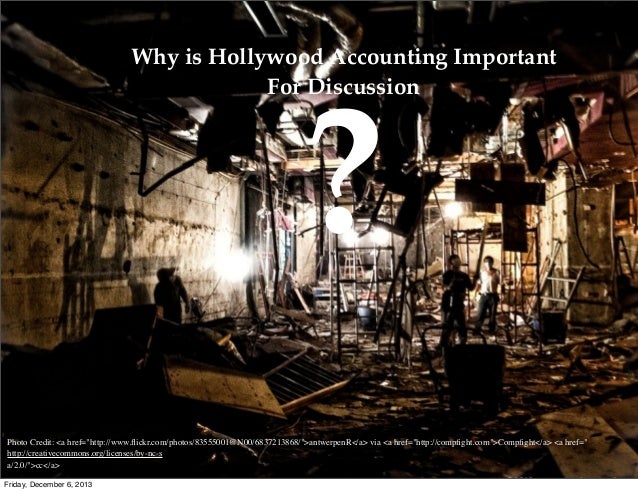
Especially when the production costs were less than a tenth of that, Paramount would later settle for $9000, rather than have their accounting methods scrutinized. Many insist on “gross points” (a percentage of some definition of gross revenue) rather than net profit participation. This practice reduces the likelihood of a project showing a profit, as a production company will claim a portion of the reported box-office revenue was diverted directly to gross point participants. The studios rarely agree to gross participation, generally only when the person has considerable leverage, such as an A-list star, producer, or director whose participation is vital to the project. The man who would love for you to think of him as both “Mister Documentary” and “Mister Independent”, Michael Moore, also filed suit over shady accounting practices. Having made $222 million against a $6 million budget, Moore’s 2004 documentary Fahrenheit 9/11 was a big surprise debuting at #1 in the USA (a definite rarity for documentaries).

Hollywood Creative Accounting, or How to Hide a Hit and Still Profit From It
In an NPR interview, author Edward Jay Epstein argues that this double-edged sword can also be doubly beneficial in some cases. When an actor, director, producer or writer is given a profit sharing contract with a promised percentage of the net profits, on paper they are shown (and reported in the press) to be making incredibly huge amounts of money… even though that money will never be seen. When negotiating their next projects they can demand higher fees based on that very thing. Fellow production companies like Brandywine, Playtone and Celador not to mention rights holders like The Tolkien Estate and creator companies like Stan Lee Media are much more likely to sue as reports of high dollars for them mean a lot less than the actual dollars themselves. Hollywood accounting or creative accounting refers to a set of complex financial practices utilized in Hollywood film studios to manipulate financial statements to show loss despite films being blockbusters.
Warner Bros. Discovery’s Max Add-on Subscriptions Launched on Prime Video in Sweden, Netherlands
But now they can show that they had to pay, say, $100 million, for distribution, even if the distribution only actually cost a fraction of that. The distribution company, owned by the studio, just made a haul, while the film officially cost a lot more to make for the studio itself. Hollywood’s unique accounting system wasn’t deliberately designed but evolved over time.
- By 2007, after a string of flops for New Line, Jackson was brought back to the studio to first executive produce, then to officially direct the new trilogy based on J.R.R. Tolkien’s The Hobbit (all part of the same continuity as The Lord of the Rings).
- So creative accounting may be a common practice, but is it legal?
- Like any company, it calculates profits by subtracting expenses from revenues.
- A similar thing is often used in marketing- again, using a separate arm to handle that, who can then charge the studio that owns them anything they please, which may or may not reflect the actual cost of marketing a given film.
How Hollywood Accounting Can Make a $450 Million Movie ‘Unprofitable’
The court further found that such formulas effectively “double-count” many expenses of the studio and have been designed for the express purpose of making sure a net profit is mathematically impossible (and therefore no profits must be shared). Brandywine, the production company responsible for Alien thus sued Fox over the distribution of those profits, delaying the sequel that Brandywine was determined to make as quickly as possible. Fox, for its part, pointed back to its financial reports that indicated that Alien was, at best, a low earner and at worst, a money loser and thus, did not warrant a sequel. As an example, the distribution of a film may be handled by another company the studio also owns. This distributor can then charge the parent company really anything they want to distribute the film. The studio will naturally accept this fee, no matter how obscene, as they’re just paying themselves.
In the past, actors like Rita Hayworth and Jimmy Stewart struck deals that allowed them a percentage of net profits. These deals were so new that studios hadn’t yet figured out how to manipulate the contracts, what is hollywood accounting leading to lucrative outcomes for the actors. Even Marvel’s Stan Lee, the co-creator of the character Spider-Man, had a contract awarding him 10% of the net profits of anything based on his characters.
Company
In the case of Alien, Brandywine acted as the production company with input from Fox, which acted as something of a co-studio. The producers were all Brandywine personnel like Gordon Carroll, David Giler and Walter Hill, but the production funds themselves came from Fox, which actually doubled the budget when it saw director Ridley Scott’s impressive story boards. 20th Century Fox had just made boffo box office with Star Wars (1977) when one of the best, scariest and most profitable films of all time was released by the same company. It was called Alien (1979), it cost between $9 and $11 million to make and by April of 1980 the film had already made over $100 million at the box office. However, the Foxy accountants revealed that by this time the film had actually lost over $2 million for the studio since its 25 May 1979 release.
Within the corporation are shell companies, those existing in name only, that are designed to siphon all of the profits from the movie and funnel them back to the studio. These shell companies handle things like advertising, marketing and distribution. They can even be set up to cover more general expenses for accountants, managers, travel and entertainment for studio heads, and so on. In 2004, Michael Moore filed a lawsuit against Harvey alongside Bob Weinstein for the right to benefit from the distribution of his film “Fahrenheit 9/11.” Moore said he was eligible for 50% of the revenues despite the movie generating over $228 million at the box office. The Weinsteins claimed Moore participated in profits and made $19.8 million. In 2012, the dispute was resolved outside of court for an undisclosed price.
For the sake of this argument, let’s pretend Brandywine agreed to 30 percent of the net profits (the total revenue minus total expenses) of Alien, while Fox agreed to accept the remaining 70 percent. That’s where large box office revenues tend to cancel out the expenses. True, the more screens a film lights up, the more money it costs to make the prints to display on those screens, but in general the increasing number of tickets sold greatly exceeds that cost.
Moving on to Harry Potter and the Order of the Phoenix, this one apparently lost Warner Bros $167 million while simultaneously being one of the most successful films the studio has ever released, grossing just under a billion dollars. He was promised 3% of the net profits (on top of a flat $350k) of the biggest film of that year–Forrest Gump. Since Forrest Gump “somehow” (you now know how) made “no money,” Groom didn’t see a penny of that 3%.
Hollywood accounting refers to the creative financial practices used by film studios to manipulate the financial reporting of a movie’s profitability. This often involves structuring costs and revenues in a way that results in the film appearing unprofitable, which can impact royalties, profit-sharing, and other financial incentives for cast and crew members. Such practices can significantly affect detailed production budgets and the overall economics of film projects. Companies like this “lose” money to make more profits for themselves. When contracts are written to share net profits with actors, writers, producers, directors or even other production companies, studios take a big hit. Therefore, to reduce (or in the case of “lost” moneys, eliminate) the amounts that a studio has to pay out, accountants will frequently massage the numbers to make that shared profit smaller and smaller and smaller until (quite often) it’s gone.
